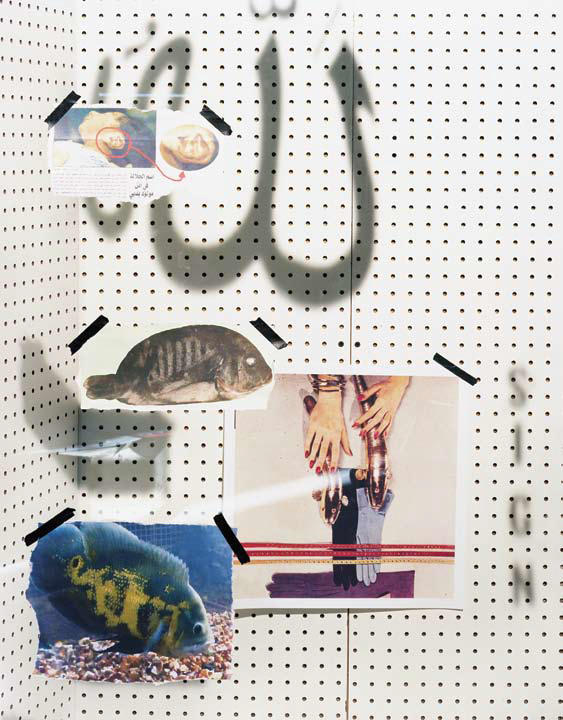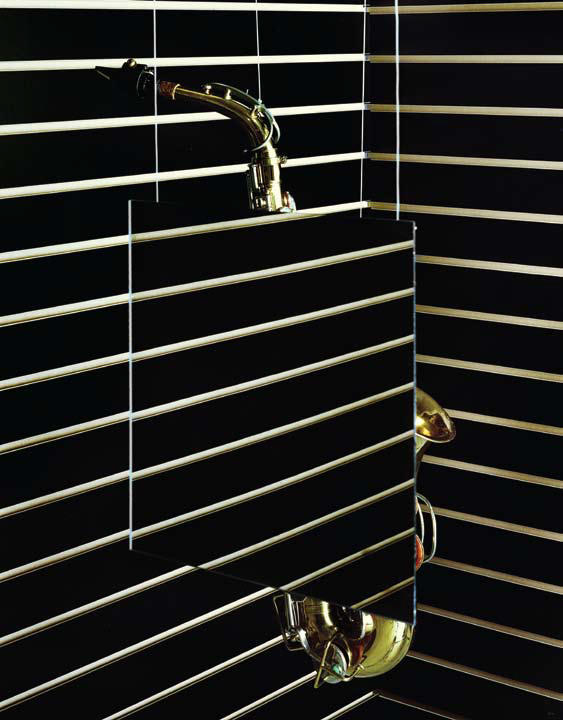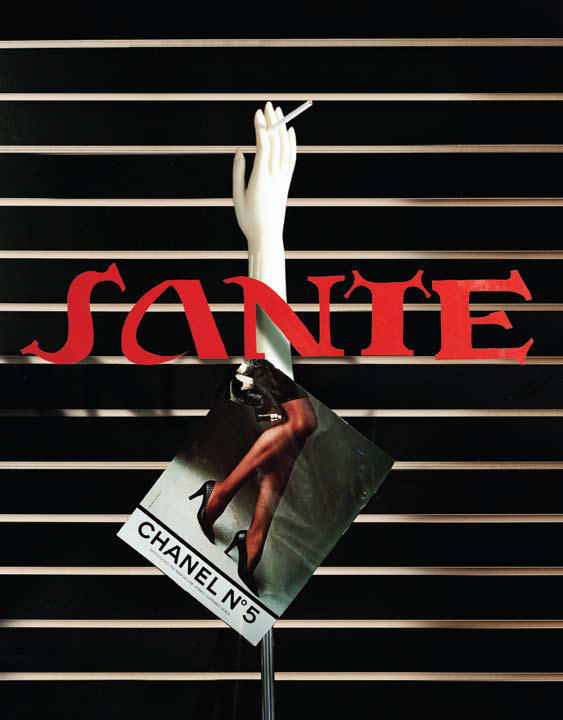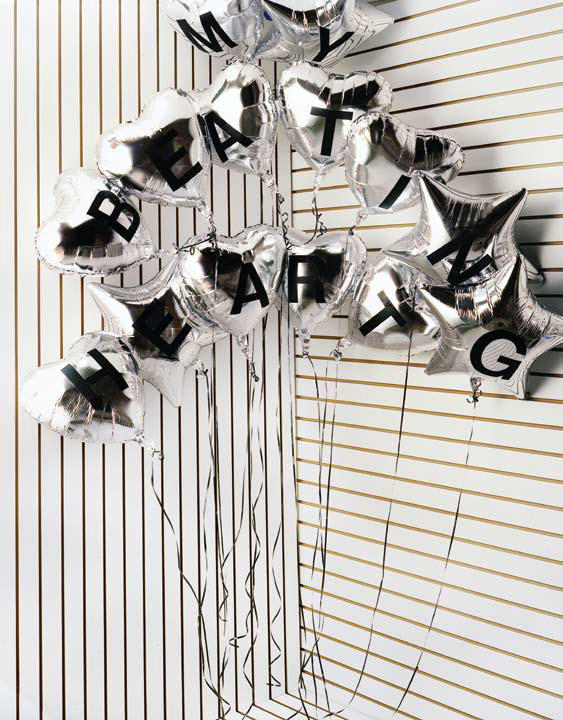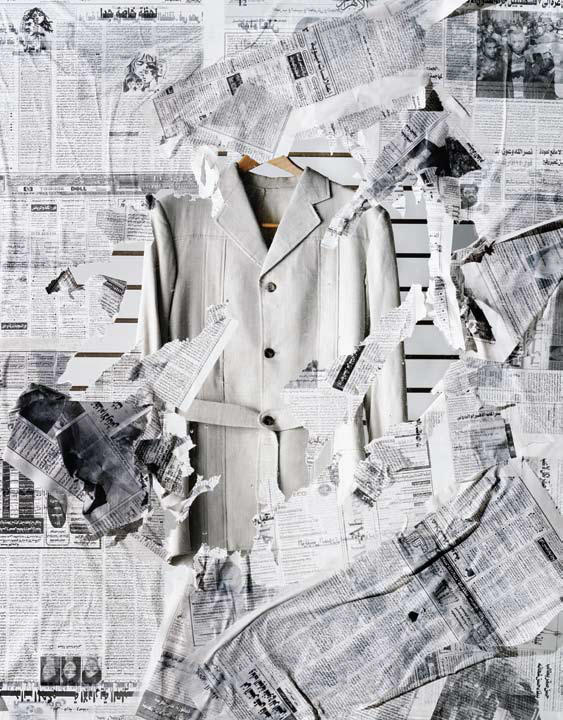
I was in Cairo, trying desperately to interview the aging pop star Ahmed Adaweya, whose penis, depending on whom you talk to, was or was not cut off by Saudi royalty. It was a uniquely American endeavor, mocked a friend of mine — invade the region with superior firepower, help topple a statue of Saddam Hussein, and then come in on a tourist visa to find a castrated singer.
“Next thing, you’ll probably want to steal this guy’s wife,” my friend said, way too loudly, waving in the direction of a Sayeedi in the corner of the coffee shop where we sat. “You’re like Genghis, but with loafers. You can just throw dollars at them. Or Michael Jackson records.” I looked nervously over my shoulder at the Sayeedi, who was wearing a green djellaba. Thankfully, he seemed oblivious to my home-wrecker plan, his eyes glued to the flickering television set. 50 Cent had his shirt off and was bragging about his magic stick. His abs were glistening; they seemed almost extraterrestrial in their beauty. No one in the coffee shop was immune to their strange and terrifying allure.
“This is not the story of 50 Cent as object of the Sayeedi gaze,” said my friend, touching my leg just above the knee. “This is the story of what you choose to see when you come to Egypt. All you see is castration.”
“Isn’t it better than being really into Umm Kulthum’s glasses?” I asked. “Or Nasser’s Hawaiian shirts? Or Sadat’s car? Or Muhammad Naguib’s presidency? Or Souad Hosni’s white dress?” Ruby started dancing on the television. “Or Ruby’s flared nostrils?” “Her nostrils are beautiful,” said the coffee-shop owner. He finished adjusting the coals on our sheesha and blew his nose on the hem of his shirt. “I could write a ghazal about her nostrils.”
“We’re talking about Ahmed Adaweya’s penis,” announced my friend.
“Not much to talk about!” Exaggerated laughter. “Now Ruby’s nostrils — there’s an object worthy of being a subject!” He whistled lasciviously and traced the outlines of the female form as imagined by a horny monk — an infinity of rolling hills.
As he walked away, I tried to explain my idea about Adaweya. Because we spoke in Arabic, I used awkward, muddled phrases, each ending with a questioning lilt: It’s about more than the rumored castration? It’s about the history of Egyptian pop music? About the shift from classically trained poets and composers to working-class louts? About technology and the cassette tape? About the man who sold a million tapes, even though the government wouldn’t allow his songs to be played on the radio? They were too lascivious? An allegory for the swamping of Egyptian nationalism by Saudi oil money?
“It’s just so crass,” my friend said. ”You like Ahmed Adaweya because he’s crass. You like him for the same reason you like this coffee shop, because it’s crappy.” He started pointing: the rickety wooden chairs with torn woven wicker seats, the dented, aluminum-topped tables, the grains of Keda tea floating in tepid water, the blanket of sawdust on the stained tile floor, the giant gap in the coffee-shop owner’s top teeth, the subtle stench of garbage wafting in from the side alley, the spidery cracks that spanned the length of the walls, the sharp smell of butane from the gas stove, the single bulb swaying on a thin wire from the sooty ceiling…
”What’s wrong with Umm Kulthum?” he demanded. “What’s wrong with being fascinated with Mahfouz or Abd al-Haleem Hafez or Fairuz? Something that requires a mastery of Arabic music or history or the goddamn language?”
“Yeah,” said the coffee-shop owner, his jowls quivering with excitement, “and why don’t you go to a nicer coffee shop?”
“I’m leaving,” the Sayeedi suddenly announced. He twirled his magnificent mustache, picked up his mysteriously bulky jute bag, and walked out of the coffee shop.
“Where is he going?” I demanded. My friend looked embarrassed. The coffee-shop owner ignored me. Outside, the Sayeedi hailed a minibus and got in, heading off to wherever it is that Sayeedis go. Where do Sayeedis go? Upper Egypt? Ain Shams? Ezbet el'Nakhl?
But this is not the Sayeedi’s story. Nor is it the story of the Sayeedi’s mustache, which nonetheless deserves a book-length study of its own. And it is most definitely not the story of Ahmed Adaweya, who is, let’s face it, kind of crass. It is, rather, the story of Naguib Mahfouz, who turned out to be worthy of fascination after all.
It turns out that meeting a Nobel laureate is far easier than meeting a washed-up and possibly castrated pop star. The difficult part is figuring out what to wear. In preparation for my interview with Mahfouz, I turned to the best-dressed man I knew, the owner of the corner store near my apartment. He was an old man, maybe sixty-five years old, and the very picture of worn elegance. He wore a three-piece suit to work every day and had four strands of hair on his head that he combed carefully. He even wore a fez, perched to display the four strands of hair.
He was very pleased that I was to meet Naguib Mahfouz. It was extremely important for a foreigner like me to meet someone like that. “There is no one alive in Egypt today who can take you into the heads of the people like Mahfouz can.” He advised me, gravely, that I should take a notebook. “He will explain Egypt to you, so you can explain it to America.”
He paused. “Of course, you’ve already read his books.”
“Of course.” Like everyone else, I had started and almost finished The Cairo Trilogy.
“Then you know that Ustez Mahfouz can describe anything.” He looked around his store, at the artfully arranged pyramid of toilet paper, at the dark wood floor and polished glass surfaces. He was rightfully proud of his store. Though he sold the same Lux soap as every other store in Cairo, he sold it with dignity. After a moment, he pointed out the window at the coffee shop across the street, where I had been sitting with my friend.
“Ustez Mahfouz understands what happens in Egypt’s streets and its coffee shops.”
Outside, the owner of the coffee shop was arguing with the mechanic who worked in the garage next door. Their daily altercations were a neighborhood ritual. The two extremely large men would start yelling at each other about something minor, then about the color of their mothers’ vaginas. Then would come the climax of the fight: approaching within inches of each other, they pulled up their shirts and twisted their torsos violently from side to side to shake their corpulent bellies. Everyone on the street froze, mesmerized by the vast expanse of hairy flesh quivering in the hot Cairo sun.
We watched from the darkness of the store. “Naguib Mahfouz understands why those two men shake their bellies?”
“Of course. Ask him. He will explain to you why they choose to fight like that. He knows what they had for breakfast this morning, what they dreamed about last night, how many children they have…”
I interrupted. “Does Naguib Mahfouz understand what a Sayeedi thinks?”
He laughed. “He even understands the secrets of the Sayeedi’s mustache.”
I showed up to my meeting with Mahfouz wearing a new suit. The store owner had taken me to his favorite tailor, and after two hours of close deliberation, they settled on a gray wool. But something had gone wrong in the tailoring; the arms reached down to my knuckles while the pants barely made it to my ankles. It was not, in any case, an easy suit to wear in the heat of a Cairo summer. By the time I reached Ustez Mahfouz, my shirt was stuck to my back. The old men had made me buy a waistcoat (for the pocket watch I would one day buy, they said), and I could feel my sweat pooling up against the stiff fabric. To make things worse, I had worn bright white socks that day, and by the time I arrived at the Shepherd Hotel in Garden City, they were stained a dusty brown.
I met Mahfouz in the hotel bar. He wore a striking white linen suit that hung loosely over his small frame. He was lost in a high-backed leather armchair. I shook his hand gingerly — this was three years before his death, and everything about him seemed delicate. I was worried that Naguib Mahfouz would see my socks or notice the poor cut of my suit. When I sat down, I could feel the stiff neck of my new dress shirt grown damp with sweat and nervousness.
Not that there was anything to be nervous about; Mahfouz was asleep for most of the evening. I was left alone with the coterie of men who made up the ranks of his salon, a group of intellectuals who filled the void of Mahfouz’s silence with talk of their own. When they found out I was American, they roared and began to lecture me on the necessity of American intervention in the Middle East, using exotic terms like “Drudge Report” and “Fareed Zakaria.” “America must push, push, PUSH on the Middle East!!” yelled one.
From time to time, someone would shake Mahfouz awake and yell a question into his ear: “Ya, Naguib-bey, what is your opinion of Ahmed Adaweya and shaabi music?”
“I love it.”
Cheers, applause, and laughter. “Ya Salaam, Naguib-bey!!”
“Naguib-bey still loves the music of the people!”
“Naguib-bey, what is your opinion of the situation in Palestine?”
“My heart goes out to the Palestinian people.”
“Naguib-bey!!! So kind!!”
A journalist from Al-wafd pointed to me: “Write that down and send it to America!!” I pretended to scrawl something down in my notebook. The pool of sweat had breached the waistcoat; even my jacket was sopping. I gulped down my water. I was completely mystified by Mahfouz, who never seemed to break a sweat.
“Naguib-bey, how do you feel about your recent birthday?”
“Praise be to God, I am still alive.”
“Ahh, Naguib-bey! So modest!!”
“Naguib-bey, what is your opinion of the movement toward democracy in Egypt?” Silence, soft snore.
“Ahh, Naguib-bey is grumpy today.”
It took several attempts to get Mahfouz to answer the question.
Finally, he whispered, “Where is this democracy movement?”
“Ahh, Naguib-bey!! So wise! Where is the democracy movement, indeed!” “Genius!”
“Naguib-bey: still the most intelligent critic in Egypt!!”
“Write that down and send it to America!”
And with that, everyone joined in the master’s silence, content to watch Mahfouz doze peacefully. I wondered whether I should pay for my water and leave, but no one else seemed restless at all, and there was something calming about the sight of Mahfouz, he brightness of his suit set against the dusty red leather of his seat.
Mahfouz woke with a start and asked for the check. We all trailed after him as he made his way to his car, which, as I was informed several times over by a member of his entourage, was the same car he had been driving for the past two decades and, indeed, the same car beside which he was stabbed a decade before. We stood outside to watch his driver help him into the car and slowly maneuver into the traffic on the Corniche. It was late evening, and the heat was still oppressive. I wiped my forehead with the arm of my suit, which was almost comically wet. “The car still exists!” one man exclaimed. “Naguib-bey’s car is with us still!! It is a beautiful car!! Naguib Mahfouz still exists! He is with us still!! Naguib-bey is a beautiful man!!! It is a beautiful car!! Today is a beautiful day!!!”
But this is not a story about Mahfouz’s car. Nor is it a story about his entourage and their multiple ejaculations. It’s not even really about Naguib Mahfouz. Rather, it is the story of his miraculously pristine white linen suit, its elegance unperturbed by its surroundings, its whiteness unsullied by his obsequious hangers-on, let alone by me.

